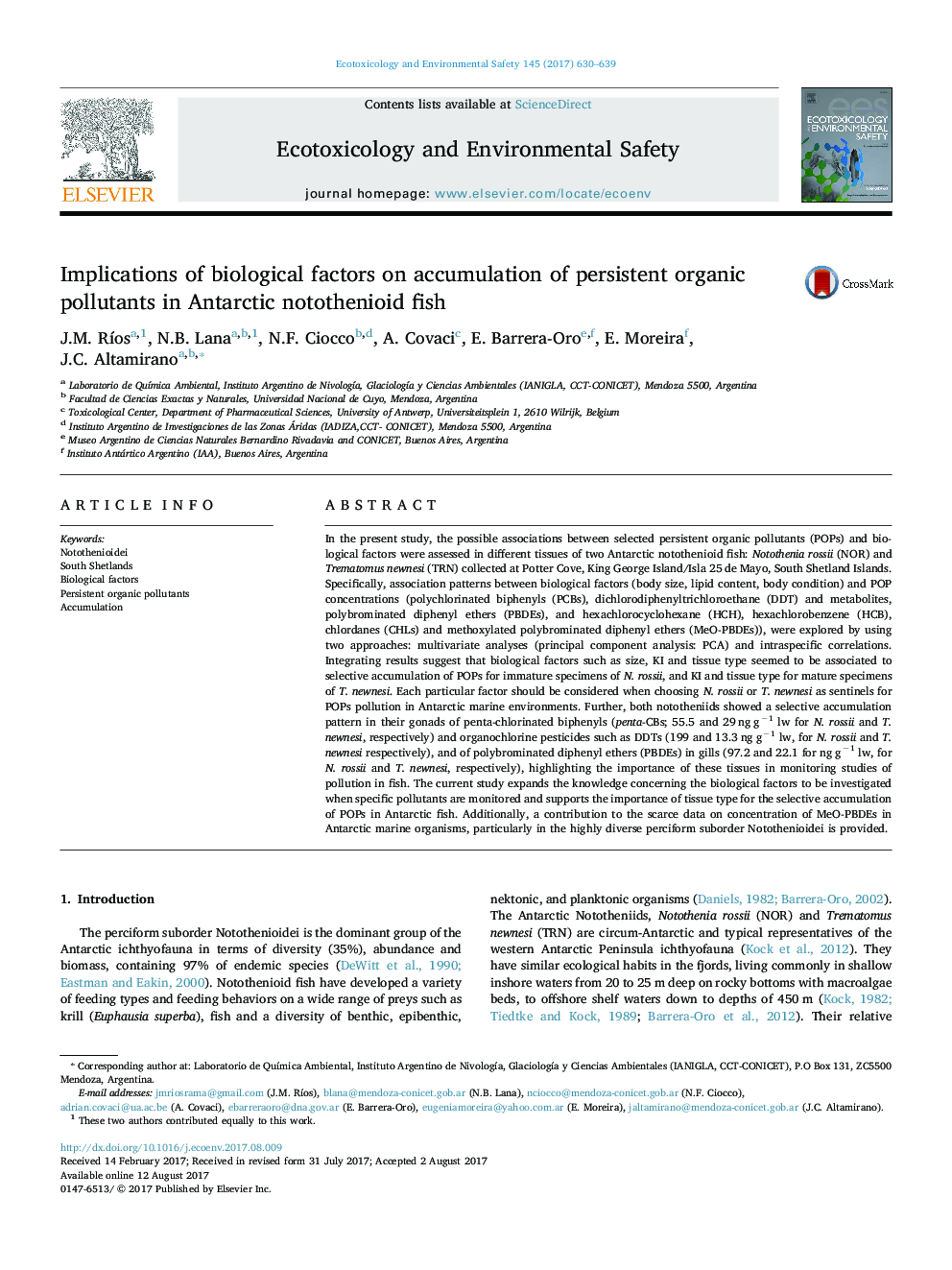| کد مقاله | کد نشریه | سال انتشار | مقاله انگلیسی | نسخه تمام متن |
|---|---|---|---|---|
| 5747760 | 1618919 | 2017 | 10 صفحه PDF | دانلود رایگان |
- Biological factors involved in POP concentrations in two Antarctic fish were examined.
- Body condition was a relevant biological factor for both Nototheniids.
- Gill tissue was a representative organ for monitoring PBDEs in both nototheniids.
- Gonad was representative for monitoring PCBs, HCH, HCB, TN and DDE in nototheniids.
In the present study, the possible associations between selected persistent organic pollutants (POPs) and biological factors were assessed in different tissues of two Antarctic notothenioid fish: Notothenia rossii (NOR) and Trematomus newnesi (TRN) collected at Potter Cove, King George Island/Isla 25 de Mayo, South Shetland Islands. Specifically, association patterns between biological factors (body size, lipid content, body condition) and POP concentrations (polychlorinated biphenyls (PCBs), dichlorodiphenyltrichloroethane (DDT) and metabolites, polybrominated diphenyl ethers (PBDEs), and hexachlorocyclohexane (HCH), hexachlorobenzene (HCB), chlordanes (CHLs) and methoxylated polybrominated diphenyl ethers (MeO-PBDEs)), were explored by using two approaches: multivariate analyses (principal component analysis: PCA) and intraspecific correlations. Integrating results suggest that biological factors such as size, KI and tissue type seemed to be associated to selective accumulation of POPs for immature specimens of N. rossii, and KI and tissue type for mature specimens of T. newnesi. Each particular factor should be considered when choosing N. rossii or T. newnesi as sentinels for POPs pollution in Antarctic marine environments. Further, both nototheniids showed a selective accumulation pattern in their gonads of penta-chlorinated biphenyls (penta-CBs; 55.5 and 29 ng gâ1 lw for N. rossii and T. newnesi, respectively) and organochlorine pesticides such as DDTs (199 and 13.3 ng gâ1 lw, for N. rossii and T. newnesi respectively), and of polybrominated diphenyl ethers (PBDEs) in gills (97.2 and 22.1 for ng gâ1 lw, for N. rossii and T. newnesi, respectively), highlighting the importance of these tissues in monitoring studies of pollution in fish. The current study expands the knowledge concerning the biological factors to be investigated when specific pollutants are monitored and supports the importance of tissue type for the selective accumulation of POPs in Antarctic fish. Additionally, a contribution to the scarce data on concentration of MeO-PBDEs in Antarctic marine organisms, particularly in the highly diverse perciform suborder Notothenioidei is provided.
175
Journal: Ecotoxicology and Environmental Safety - Volume 145, November 2017, Pages 630-639
